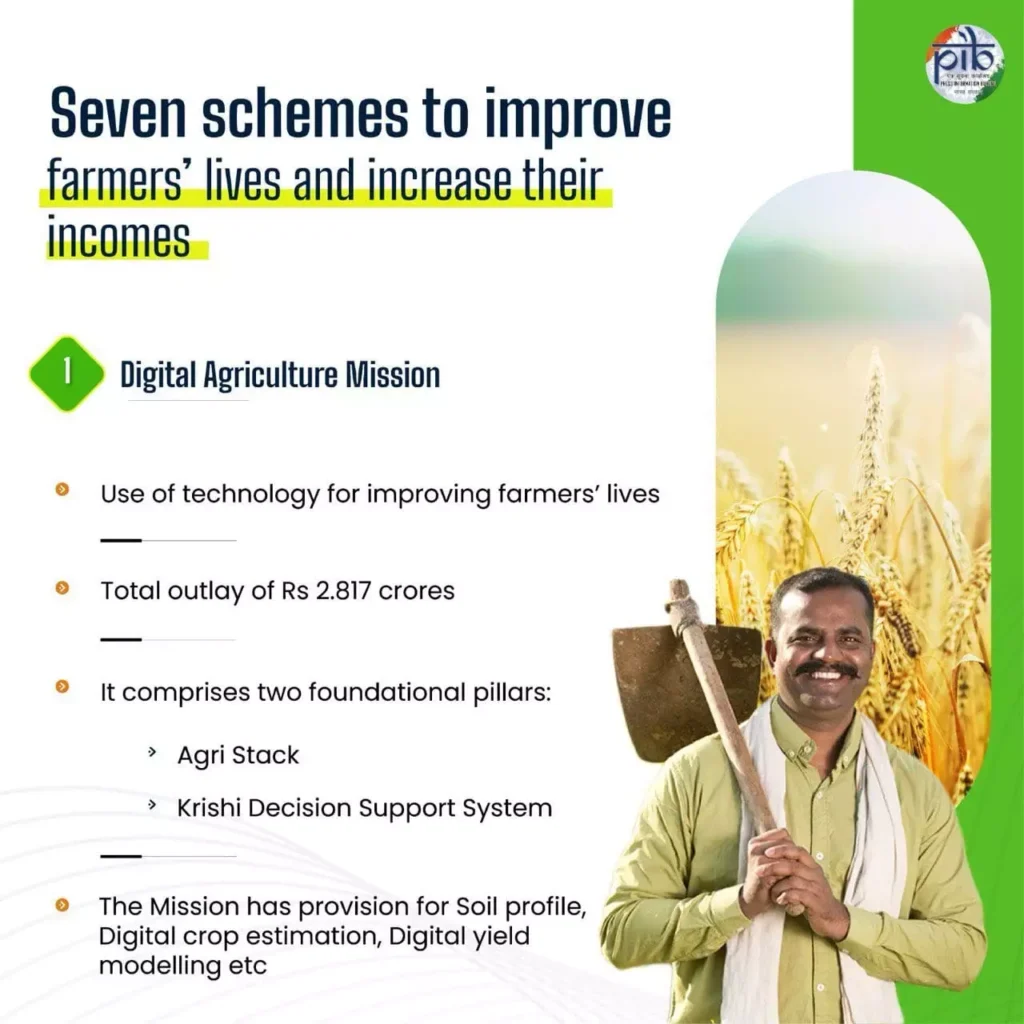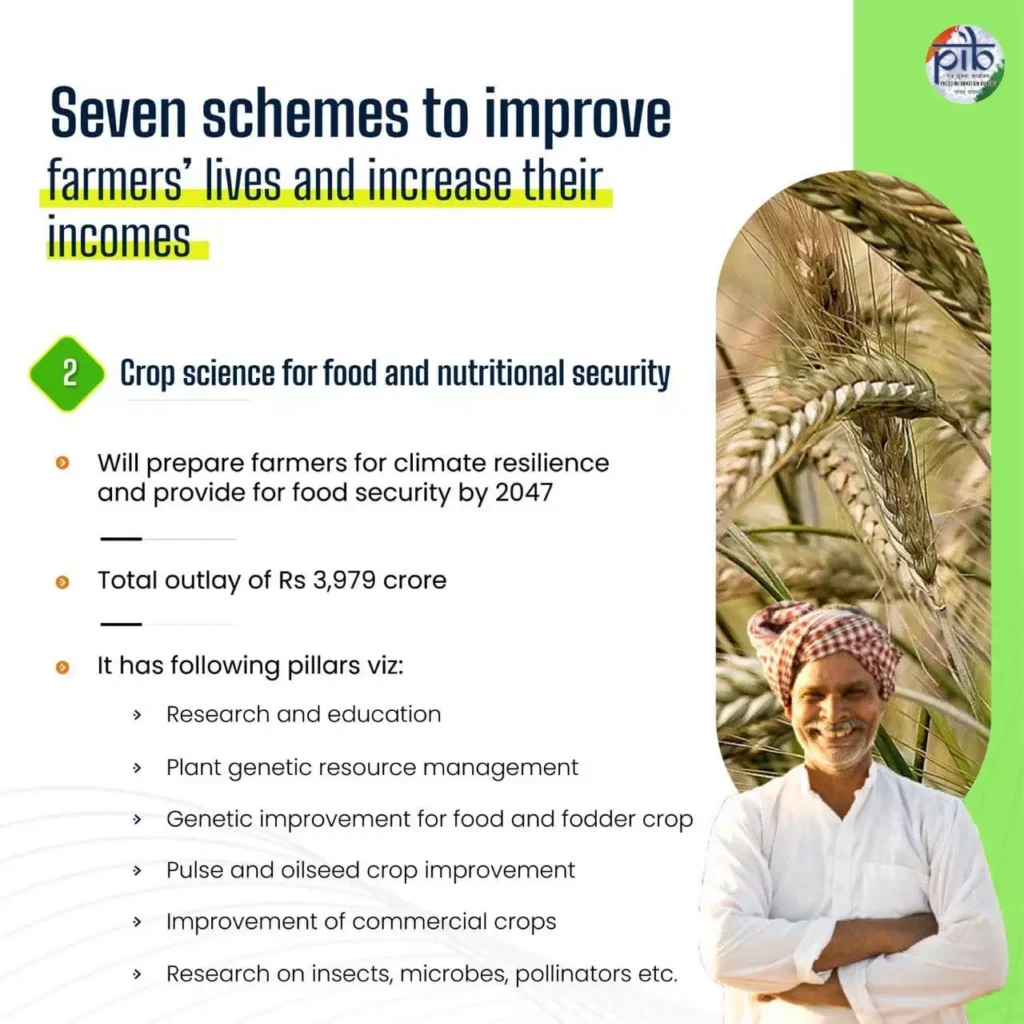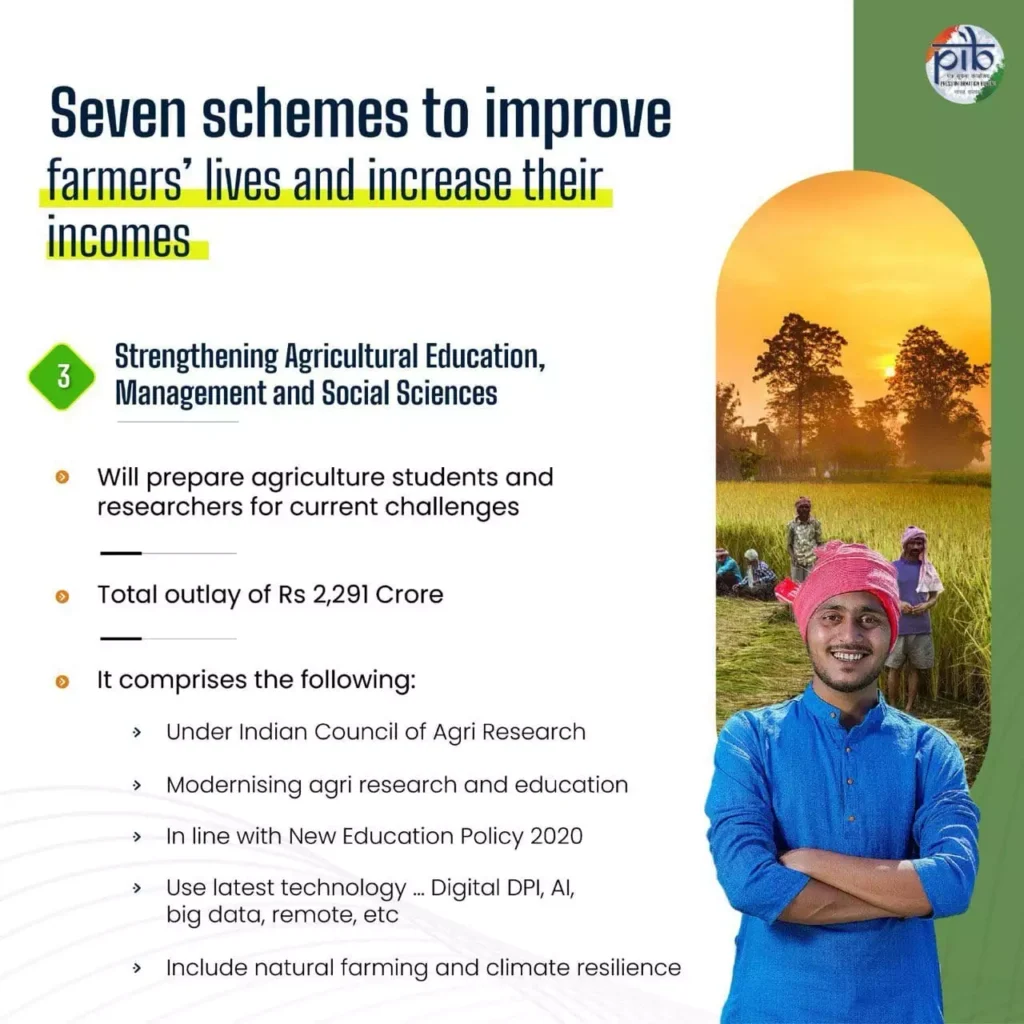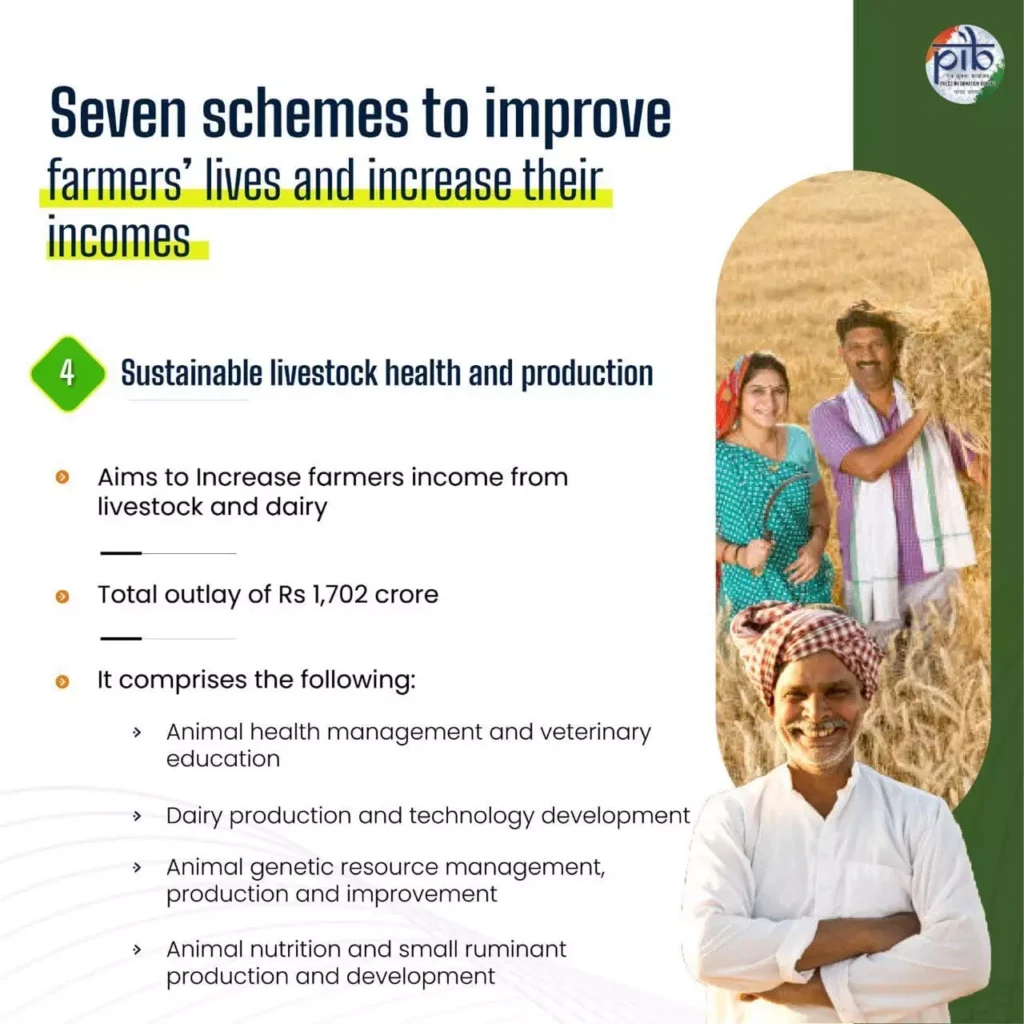The Union Cabinet recently approved 7 major schemes such as Digital Agriculture Mission, with a total outlay of Rs 14,235.30 crore, to boost agricultural productivity, ensure food and nutritional security, and promote sustainable practices.
About 7 schemes launched:
1. Digital Agriculture Mission (DAM)
- An umbrella scheme to support digital agriculture initiatives and enhance farmers’ lives using technology.
- Total Outlay: Rs 2,817 crore
- Pillars:
- Digital Public Infrastructure (DPI): A set of systems for economic opportunities and social services.
- AgriStack:
- Farmers registry
- Village land maps registry
- Crop Sown Registry
- Krishi Decision Support System:
- Geospatial data
- Drought/flood monitoring
- Weather/satellite data
- Groundwater/water availability data
- Crop yield and insurance modelling
- Soil Profiling: Detailed soil profile maps for agricultural land.
- Provisions:
- Soil profile analysis
- Digital crop estimation
- Digital yield modeling
- Connectivity for crop loans
- Integration of AI, Big Data, and modern technologies
- New knowledge dissemination via mobile phones
- Significance
- Efficiency: Improves service delivery and scheme implementation for farmers.
- Employment: Creates job opportunities for 2.5 lakh trained local youth and Krishi Sakhis.
- Value Chains: Enhances agricultural inputs and post-harvest processes.
2. Crop Science for Food and Nutritional Security
- Total Outlay: Rs 3,979 crore
- Objective: Prepare farmers for climate resilience and ensure food security by 2047.
- Pillars:
- Research and education on insects, microbes, and pollinators
- Plant genetic resource management
- Genetic improvement for food and fodder crops
- Pulse and oilseed crop improvement
- Commercial crop enhancement
3. Strengthening Agricultural Education, Management, and Social Sciences
- Total Outlay: Rs 2,291 crore
- Objective: Equip agriculture students and researchers for contemporary challenges.
- Components:
- Modernization of agri-research and education
- Alignment with New Education Policy 2020
- Use of digital technologies, AI, and big data
- Focus on natural farming and climate resilience
4. Sustainable Livestock Health and Production
- Total Outlay: Rs 1,702 crore
- Objective: Enhance farmers’ income from livestock and dairy.
- Components:
- Animal health management and veterinary education
- Dairy production and technology development
- Animal genetic resource management and improvement
- Animal nutrition and small ruminant production
5. Sustainable Development of Horticulture
- Total Outlay: Rs 1,129.30 crore
- Objective: Increase income from horticulture plants.
- Components:
- Tropical, sub-tropical, and temperate crops
- Root, tuber, bulbous, and arid crops
- Vegetable, floriculture, and mushroom crops
- Plantation, spices, medicinal, and aromatic plants
6. Strengthening of Krishi Vigyan Kendra (KVK)
- Objective: Enhance the capacity and efficiency of KVKs.
- Total Outlay: Rs 1,202 crore
7. Natural Resource Management
- Objective: Efficient management of natural resources.
- Total Outlay: Rs 1,115 crore
Ref: Source
| UPSC IAS Preparation Resources | |
| Current Affairs Analysis | Topperspedia |
| GS Shots | Simply Explained |
| Daily Flash Cards | Daily Quiz |
Frequently Asked Question:
What is the Digital Agriculture Mission (DAM)?
The DAM is an umbrella scheme aimed at supporting digital agricultural initiatives and improving farmers’ lives through technology. It consists of various pillars such as Digital Public Infrastructure, AgriStack, and Krishi Decision Support System, with a total outlay of Rs 2,817 crore.
What are the pillars of the Digital Agriculture Mission?
The pillars of the DAM include Digital Public Infrastructure (DPI), AgriStack which consists of Farmers registry, Village land maps registry, Crop Sown Registry, Krishi Decision Support System providing geospatial data, drought/flood monitoring, weather/satellite data, groundwater/water availability data, and Crop yield and insurance modeling, and Soil Profiling.
What are the provisions under the Digital Agriculture Mission?
Under the DAM, provisions like soil profile analysis, digital crop estimation, and digital yield modeling have been introduced. These provisions aim to provide detailed soil profile maps for agricultural land, helping in improving agricultural productivity and ensuring food security.
What is the objective of the Crop Science for Food and Nutritional Security scheme?
The objective is to prepare farmers for climate resilience and ensure food security by 2047 through research and education on insects, microbes, and pollinators, plant genetic resource management, genetic improvement for food and fodder crops, and more.
What are the pillars of the Crop Science for Food and Nutritional Security scheme?
The pillars include research and education on insects, microbes, and pollinators; plant genetic resource management; genetic improvement for food and fodder crops; pulse and oilseed crop improvement; and commercial crop enhancement.
What is the total outlay for the Strengthening Agricultural Education, Management, and Social Sciences scheme?
The total outlay for the scheme is Rs 2,291 crore, with the objective of equipping agriculture students and researchers for contemporary challenges through modernization of agri-research and education, alignment with New Education Policy 2020, use of digital technologies, and focus on natural farming and climate resilience.
What is the objective of the Sustainable Livestock Health and Production scheme?
The objective is to enhance farmers’ income from livestock and dairy through components such as animal health management and veterinary education, and dairy production improvement.
What are the components of the Sustainable Livestock Health and Production scheme?
The components include animal health management and veterinary education, dairy production enhancement, and initiatives aimed at improving livestock health and production for increased income for farmers.








